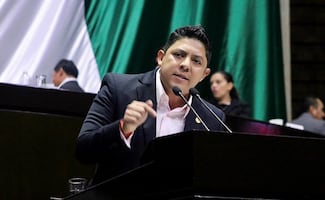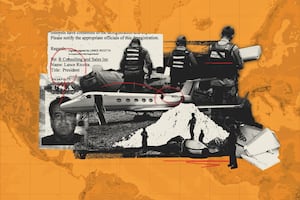Más Información

En SLP nunca ha existido una gobernadora y ahora hay una posibilidad real que así sea, asegura Ricardo Gallardo tras aprobación de "Ley Esposa"

Morena analiza disminución de pluris y elección popular de consejeros del INE: Monreal; serán revisadas en la reforma electoral, dice

Rastro de jets vinculados al narcotráfico lleva a un vendedor en California… y a un punto ciego de la regulación aérea en Estados Unidos

Secretaría Anticorrupción sanciona a dos empresas por buscar contratos con información falsa; imponen multa de miles de pesos

Banxico se despide de 2025 con otro recorte a la tasa de interés; queda en 7% por ajuste de 25 puntos base

El Día de Muertos, or the Day of the Dead, has been celebrated in Mexico way before the arrival of the Spanish. In fact, the holiday has been celebrated continuously for 3,000 years and the traditional celebrations of today are a mix between pre-Hispanic and Christian traditions.
For some Mesoamerican cultures, it was a tradition to save the skulls of enemies killed during times of warfare as a sort of trophy that were then used in rituals related to death and rebirth. During these celebrations, indigenous people honored the Aztecs gods Micthlantecuhtli and Mictecacíhuatl, the deities of death.
A difference between the celebrations before the arrival of the Spanish is that it used to be celebrated on the ninth month of the Aztec calendar, which begins in August on the Gregorian calendar. The celebration also lasted an entire month. The festivities were presided over by

A modern day represenation of Mictecacihuatl, the Dame of the Dead, during a parade in Mexico City.
Mictecacihuatl, known then as the “Dame of the Dead,” and today as “La Catrina,” and was dedicated to the children and loved ones who had passed away.
Although debated, the Day of the Dead is believed to date back to 800 BCE. What is known, however, is that for the Aztecs the celebration marked the end of the harvest season for garbanzo beans, maize and squash, which formed part of their offering to the “Dame of the Dead,” queen of the Chinamictlán, guardian of the ninth level of the underworld, known as Mictlán, which was a resting place for people who died of natural causes.

Two xoloitzcuintle dogs, also known as the Mexican Hairless Dog, which were believed to help guide and protect loved ones during their journey into the afterlife.
Researchers believe that the Festival of the Dead is a fusion of pre-Hispanic customs that included burying the dead with precious objects, food, offerings and other precious things, since people believed that the dead went to the Kingdom of Mictlán before passing on to Tlalocan, the Aztec heaven. The dead, therefore, needed food, water and candles on this long and arduous journey. They were even buried with their xoloitzcuintles (Mexican hairless dogs), who helped guide them and protect them from any harm on their journey.
When August came, altars were set up for the dead, which included burning incense and placing cempasúchitl flowers (Mexican marigold) to help guide the spirits of their loved ones back to the terrestrial world.

Two women buying cempasúchil flowers, which have been used to decorate altars since pre-Hispanic times.
In the Huasteca region of Mexico, for example, people celebrated the Xantolo, The Festival of the Spirits, which consisted of giving maize offerings to the Gods during an elaborate party for loved ones who had passed away. The Haustecos believed that the essence of their loved one's spirits was present among them, which is they celebrated with fruit, music and light to honor and remember their time on earth.
For Mesoamericans, death meant something completely different than what it means to us today under Catholic tradition. They believed that the way in which you died influenced where your soul would go, not how you behaved while alive.
When the Spanish arrived in America in the fifteenth century, they were terrified by the pagan traditions of the indigenous people and in an attempt to convert them to Catholocism, they changed the date of the festivities to November so as to coincide with the Catholic celebration of All Saints' Day. This is why the Day of the Dead today has Christian influences.
Today, although they share certain traditions, all states have their own special way of celebrating Day of the Dead.
Noticias según tus intereses
[Publicidad]
[Publicidad]








